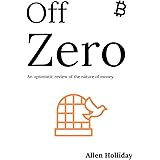The digital asset landscape continues to evolve at an unprecedented pace, with the accompanying video highlighting a significant milestone: Bitcoin has surged to new all-time highs, climbing above $125,000. This remarkable ascent, specifically reaching approximately $125,700 earlier today, represents a substantial leap from its previous peak of $124,000 recorded just in August. Such robust performance is not isolated, as major cryptocurrencies like Ether and Solana also registered notable gains, with Ether climbing around 3% and Solana increasing nearly 2.5% to approximately $236 as of midday. These movements are indicative of a broad-based rally, supported by a confluence of macroeconomic shifts, structural supply-side dynamics, and increasing institutional engagement.
The Ascendant Trajectory of Bitcoin: Record Highs and Market Dynamics
The recent surge in Bitcoin’s value, surpassing the $125,000 mark, has been attributed to a complex interplay of factors that have shifted the market sentiment positively. Unlike previous speculative spikes, this rally is observed to be more fundamentally driven, supported by a constructive macroeconomic backdrop. Imagine if global financial conditions were tightening; such a surge would be improbable.
Macroeconomic Headwinds Shift to Tailwinds for Bitcoin
A critical catalyst for the current Bitcoin rally involves a significant shift in the macroeconomic environment. Falling yields in traditional markets, alongside an improvement in overall market liquidity and a reduction in volatility, have created a more favorable climate for risk assets. This environment is largely influenced by expectations surrounding the Federal Reserve’s easing cycle, with the market anticipating up to five rate cuts by the end of 2026. Easier monetary policy typically enhances the appeal of alternative assets such as Bitcoin, as the opportunity cost of holding non-yielding assets decreases. Furthermore, a relaxed fiscal policy environment also contributes to the heightened liquidity, providing additional impetus for capital flows into digital assets.
Structural Supply Dynamics and Market Cycles: The Four-Year Rhythm
Beyond the macro narrative, inherent structural elements within the Bitcoin ecosystem continue to exert a profound influence on its price trajectory. The concept of ‘Uptober’ and the historical strength of Q4 for Bitcoin are frequently discussed, with median returns for the fourth quarter having been around 50% over the past decade. This cyclical performance underscores the predictable supply shocks introduced by Bitcoin’s halving events, which reduce the rate at which new Bitcoin enters circulation. While the four-year cycle post-halving remains a significant framework, signs of “late cycle maturation” are increasingly noted. The outperformance of altcoins, the emergence of meme coins in the ETF space, or a dominant focus on infrastructure stories often indicate a maturing phase rather than the initiation of an entirely new cycle. However, the prevailing liquidity-driven rally suggests continued optimism for the next leg of Bitcoin’s journey, with a clean breakout above $127,000 potentially triggering momentum towards the $135,000 to $142,000 range.
The Institutional Imperative: Corporate Treasuries and Market Maturation
One of the most defining characteristics of the current rally is the amplified participation of institutional investors. The increasing trend of corporations holding Bitcoin in their treasuries, with over 60 firms now expanding their holdings, signifies a profound legitimization of the asset class. This institutional embrace helps to significantly decrease Bitcoin’s historical volatility, thereby enhancing its appeal as a diversified asset in broader portfolios. Imagine a future where Bitcoin’s inclusion in corporate balance sheets becomes as commonplace as traditional commodities; its role as a stabilizing force in the crypto market is thus strengthened. This increased participation creates a positive feedback loop: greater institutional involvement leads to reduced volatility, which in turn fosters more institutional interest and broader acceptance of Bitcoin’s diversification benefits.
Innovation in Digital Assets: Staking and Integrated Trading Platforms
The digital asset ecosystem is also experiencing a wave of innovation that enhances accessibility and utility. Galaxy Digital’s launch of ‘Galaxy One,’ a trading platform designed to offer access to both traditional stocks/ETFs and digital assets, signifies a move towards integrated financial services. This platform, reminiscent of Robinhood’s user-friendly interface, aims to disrupt traditional banking by aggregating diverse financial offerings into a single environment. Imagine the efficiency gained by investors who no longer need to shift funds between separate bank, brokerage, and crypto accounts.
Concurrently, Grayscale has introduced staking capabilities for its Ether and Solana investment products, making it the first to offer staking through US-listed spot crypto ETPs. This development applies to existing products like the Grayscale Ethereum Trust ETF, Ethereum Mini Trust ETF, and the Grayscale Solana Trust. It provides traditional brokerage account holders with one of the few avenues to access SOL staking. This innovation democratizes access to yield-generating opportunities within the crypto space, allowing a broader base of investors to participate in network security and earn rewards without direct asset management.
Optimizing Digital Asset Allocation in Sophisticated Portfolios
Discussions regarding optimal crypto allocation within investment portfolios frequently arise among sophisticated investors. While some suggest a range of 5% to 10%, and others advocate for allocations as high as 40%, a definitive percentage is generally not recommended due to individual investor profiles and risk tolerances. The appropriate allocation size is ultimately determined by an amount that prevents any single asset, particularly a volatile one like Bitcoin, from derailing an investor’s long-term financial objectives. Concurrently, the allocation must be substantial enough to allow for meaningful participation in potential upside scenarios. It is crucial that the inherent volatility of digital assets does not compromise long-term strategic investment plans. As the market matures and institutional adoption deepens, precise allocation strategies will continue to be refined, balancing risk and reward within diversified portfolios.







